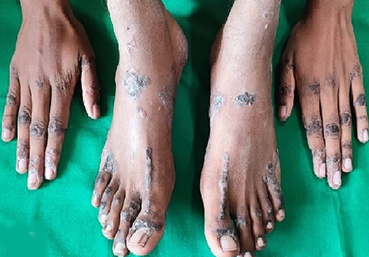Necrolytic acral erythema and acrodermatitis enteropathica: Do they belong to the same disease spectrum?

Downloads
DOI:
https://doi.org/10.26326/2281-9649.34.4.2687How to Cite
Abstract
Acrodermatitis enteropathica (AE), with its classic onset at weaning, manifests with diarrhea, alopecia, and periorificial and acral lesions. This inherited skin disorder is caused by mutations in the SLC39A4 gene (solve carrier family 39 member A4) encoding the jejunal transporter of zinc ligand protein – ZIP4 –. Acquired zinc deficiency may result from malabsorption, chronic liver or kidney disease, artificial feeding, and protein-energy malnutrition.
Necrolytic acral erythema (NAE), is a distinct clinical entity associated with HCV infection, hypoalbuminemia, hypoaminoacidemia, and hyperglucagonemia, and also with zinc deficiency (both serum and epidermal). NAE usually begins in adulthood between the ages of 19 and 58 years. Typical NAE plaques with erythematous border and adherent crusts predominantly involve the dorsum of the feet and their toes. Involvement of the hands, palms, soles, buttocks, and genitals, as in the present case, is rare.
